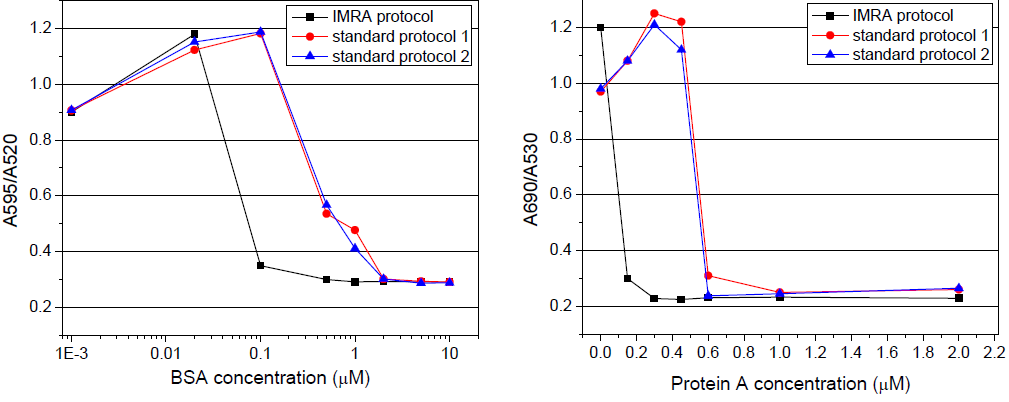High efficiency conjugation of biomolecules
High efficiency conjugation of biomolecules
I-colloid
Technical note T04
Lowering your cost of lateral flow assay by high efficiency antibody conjugation
Compared with the cost of gold nanoparticles, biomolecules for conjugation (proteins, antibodies, etc.) can be more expensive and account for a major part of the total cost of gold conjugates. In a typical physical adsorption conjugation process, a large excess amount of antibody have to be provided in the solution to ensure that the gold nanoparticles surfaces are fully covered and the colloids are stable for subsequent applications. Such inefficient conjugation significantly increases the cost of production of lateral flow and other type of assays that use gold conjugates.
Why i-colloid Au nanoparticles?
The i-colloid Au nanoparticles are produced by our unique pulsed laser-based material processing technique (Tech note T01). The process is free of surfactant and reagents (Tech note T02), ensuring uncovered fresh gold surfaces that have an exceptional affinity with biomolecules. During conjugation, the amount of biomolecules needed to fully cover the particle surfaces and stabilized the colloid is reduced significantly, largely improving the conjugation efficiency.
Examples
Below are two demonstrations where i-colloid Au nanoparticles are conjugated with BSA and protein A. The stableness of the conjugates is tested against salt-induced precipitation by adding a high concentration (0.85 M) of NaCl. The level of aggregation is evaluated by measuring the ratio of optical absorption at long wavelength (≥ 595 nm) over the absorption at the nanoparticle plasmon resonance (520-530 nm). A small value of the ratio below 0.4 indicates outstanding colloidal stability against the destabilizing salt, suggesting a full coverage of the nanoparticle surfaces by the proteins.

I-colloid
Technical note T04
Lowering your cost of lateral flow assay by high efficiency antibody conjugation
Compared with the cost of gold nanoparticles, biomolecules for conjugation (proteins, antibodies, etc.) can be more expensive and account for a major part of the total cost of gold conjugates. In a typical physical adsorption conjugation process, a large excess amount of antibody have to be provided in the solution to ensure that the gold nanoparticles surfaces are fully covered and the colloids are stable for subsequent applications. Such inefficient conjugation significantly increases the cost of production of lateral flow and other type of assays that use gold conjugates.
Why i-colloid Au nanoparticles?
The i-colloid Au nanoparticles are produced by our unique pulsed laser-based material processing technique (Tech note T01). The process is free of surfactant and reagents (Tech note T02), ensuring uncovered fresh gold surfaces that have an exceptional affinity with biomolecules. During conjugation, the amount of biomolecules needed to fully cover the particle surfaces and stabilized the colloid is reduced significantly, largely improving the conjugation efficiency.
Examples
Below are two demonstrations where i-colloid Au nanoparticles are conjugated with BSA and protein A. The stableness of the conjugates is tested against salt-induced precipitation by adding a high concentration (0.85 M) of NaCl. The level of aggregation is evaluated by measuring the ratio of optical absorption at long wavelength (≥ 595 nm) over the absorption at the nanoparticle plasmon resonance (520-530 nm). A small value of the ratio below 0.4 indicates outstanding colloidal stability against the destabilizing salt, suggesting a full coverage of the nanoparticle surfaces by the proteins.
